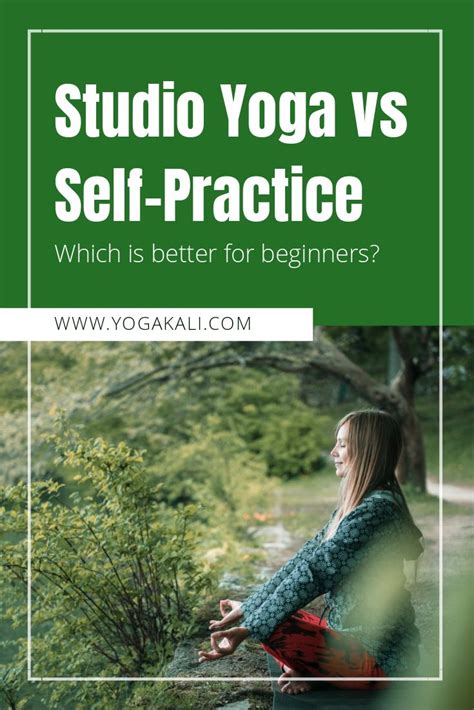Yoga Studio vs Home Practice: Which is Better for Beginners?
Yoga is increasingly popular as a practice that enhances physical health, mental clarity, and emotional well-being. However, for beginners, one critical question remains: Should you start yoga in a studio under the guidance of an instructor, or is a home practice more effective? Both approaches have their own sets of benefits and drawbacks, and this comprehensive guide will help you decide which is best suited for your needs and lifestyle.
Introduction
Yoga has exploded in popularity over the past few decades, with millions of practitioners worldwide. For those just beginning their yoga journey, deciding where to start can be a significant dilemma. The debate between yoga studio classes and home practice is ongoing, as both environments offer unique experiences. To determine which method is best for you, we’ll analyze both options from various angles—accessibility, cost, instructor guidance, social interaction, personal comfort, and effectiveness in fostering long-term growth.
Key Concepts
- Yoga Studio Practice: A structured environment where yoga sessions are led by a certified instructor in a group setting, offering hands-on guidance and a variety of styles.
- Home Practice: Practicing yoga independently, typically through online videos, apps, or personal sequences, in the comfort of your home.
- Guided Instruction: The value of learning from a certified teacher who provides personalized feedback and correction.
- Consistency: The role of routine and habit-building in either setting for long-term commitment to yoga.
- Accountability: The significance of social or self-driven mechanisms to keep practitioners on track.
Historical Context
Yoga is an ancient practice originating in India over 5,000 years ago, traditionally taught through an apprentice-mentor relationship. In the modern era, yoga has transformed significantly, making its way into the fitness and wellness industries. The emergence of yoga studios in the 20th century was pivotal in bringing the practice to a broader audience, especially in the West. The advent of online yoga platforms and at-home practice options has disrupted traditional studio models, providing greater accessibility but also raising questions about the quality of instruction and community engagement.
Current State Analysis
Yoga Studio: The Benefits and Drawbacks
Yoga studios are designed to offer an immersive experience with skilled instructors and a supportive group atmosphere. Here are the key pros and cons:
- Instructor Guidance: A major advantage of studio practice is access to real-time feedback. Instructors can correct postures, suggest modifications, and provide personalized adjustments.
- Social Interaction: Group classes provide a sense of community and shared experience, which can be motivating for some practitioners.
- Variety of Classes: Most studios offer a wide range of yoga styles (e.g., Hatha, Vinyasa, Ashtanga), allowing students to experiment and find what suits them best.
- Cost: A downside for many is the price. Studio memberships or drop-in fees can be expensive, especially compared to free or low-cost home practice options.
- Time and Accessibility: Studio sessions are often scheduled at specific times, which may not fit everyone’s routine. Additionally, proximity to a studio could be an issue for those in rural or suburban areas.
Home Practice: The Benefits and Drawbacks
- Convenience and Flexibility: Home practice allows you to fit yoga into your schedule whenever it’s convenient, without the need to travel to a studio.
- Cost-Effective: With numerous free online resources (e.g., YouTube, apps), practicing yoga at home is generally more affordable than attending studio classes.
- Customizable Environment: Practicing in the comfort of your own space can make yoga more accessible, especially for those who feel self-conscious in a group setting.
- Lack of Direct Guidance: A significant drawback of home practice is the absence of real-time feedback from an instructor, which could lead to incorrect postures or potential injury.
- Less Social Interaction: Home practice is solitary, which might be demotivating for those who thrive in communal environments.
Practical Applications
For beginners, the decision to start in a studio or at home often depends on their personal goals and circumstances. Here’s a breakdown of which option may work best for different types of individuals:
| Goal/Preference | Recommended Approach |
|---|---|
| Desires hands-on feedback | Yoga Studio |
| Has a busy or irregular schedule | Home Practice |
| Feels more motivated in groups | Yoga Studio |
| Prefers a cost-effective option | Home Practice |
| Wants access to a variety of styles | Yoga Studio |
| Values personal space and flexibility | Home Practice |
Case Studies
Case Study 1: Anna, a Full-Time Professional
Anna works 9-5, has a family, and struggles to find time for self-care. She tried attending a yoga studio but found it challenging to fit the class schedules into her already busy day. She decided to begin a home practice using an online platform, which allowed her to practice at her convenience. Over time, Anna found herself practicing more consistently and enjoyed the freedom of choosing from different online instructors. However, she noticed a lack of progress in her technique, prompting her to occasionally book private lessons at a local studio.
Case Study 2: Jake, a Yoga Enthusiast
Jake enjoys practicing yoga for its mental and physical benefits. He started with a home practice, but over time, he felt his progress plateauing. Seeking more challenge and expert guidance, he joined a local studio, where instructors provided hands-on adjustments and introduced him to new yoga styles he hadn’t previously tried. Jake found that a mix of studio practice and home sessions best supported his growth.
Stakeholder Analysis
Different stakeholders are impacted by the decision to practice at home or in a studio, each with their own set of interests:
- Yoga Instructors: Typically advocate for studio practice as they can offer direct support and correction. However, some instructors also see value in home practice through online platforms.
- Yoga Studio Owners: Prefer in-person attendance for financial sustainability but are increasingly adopting hybrid models to offer online classes.
- Yoga Practitioners: Ultimately, practitioners must balance convenience, cost, and learning preferences to choose the best environment for their goals.
Implementation Guidelines
For those choosing between yoga studio practice and home practice, here are some tips for effective implementation:
- For Studio Practice: Begin with beginner-friendly classes. Don’t hesitate to ask the instructor for modifications or assistance if needed. Try different styles to find one that resonates with you.
- For Home Practice: Invest in some basic props (e.g., a yoga mat, blocks). Start with online classes from certified instructors and ensure you focus on proper alignment. Set a schedule to practice consistently, and consider supplementing with occasional in-person classes for feedback.
Ethical Considerations
There are several ethical concerns in the debate between studio and home practice. Studios, as businesses, must be careful not to over-commercialize the spiritual aspects of yoga. On the flip side, home practitioners may miss out on important cultural and ethical teachings, as much of the material available online focuses purely on physical aspects. Both environments should respect the integrity of yoga as a holistic practice.
Limitations and Future Research
While this article provides a comprehensive comparison of yoga studio and home practice, there are still limitations to consider. For example, research on the long-term impacts of home practice compared to studio practice is sparse. Future studies could examine the effectiveness of hybrid models where practitioners combine studio classes with a home routine, and how technology-driven platforms can further enhance the home practice experience without sacrificing quality.
Expert Commentary
Experts generally agree that there is no one-size-fits-all answer to the question of yoga studio vs. home practice. Both options offer unique benefits and challenges, and many experienced yogis recommend a hybrid approach to maximize growth. Ultimately, the choice depends on the individual’s lifestyle, budget, and personal goals. Regardless of where you practice, consistency, mindfulness, and a willingness to learn are the keys to a rewarding yoga journey.








